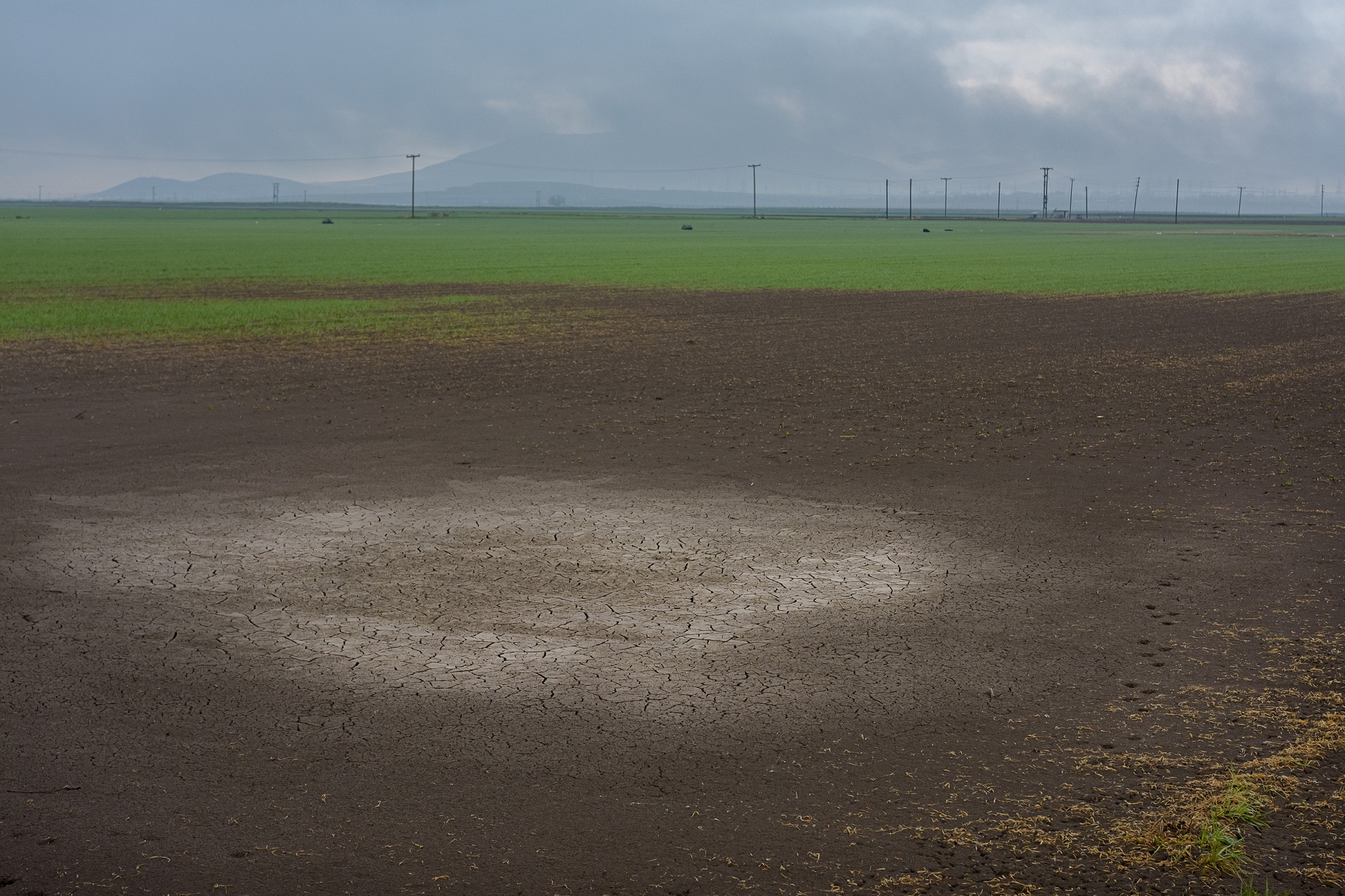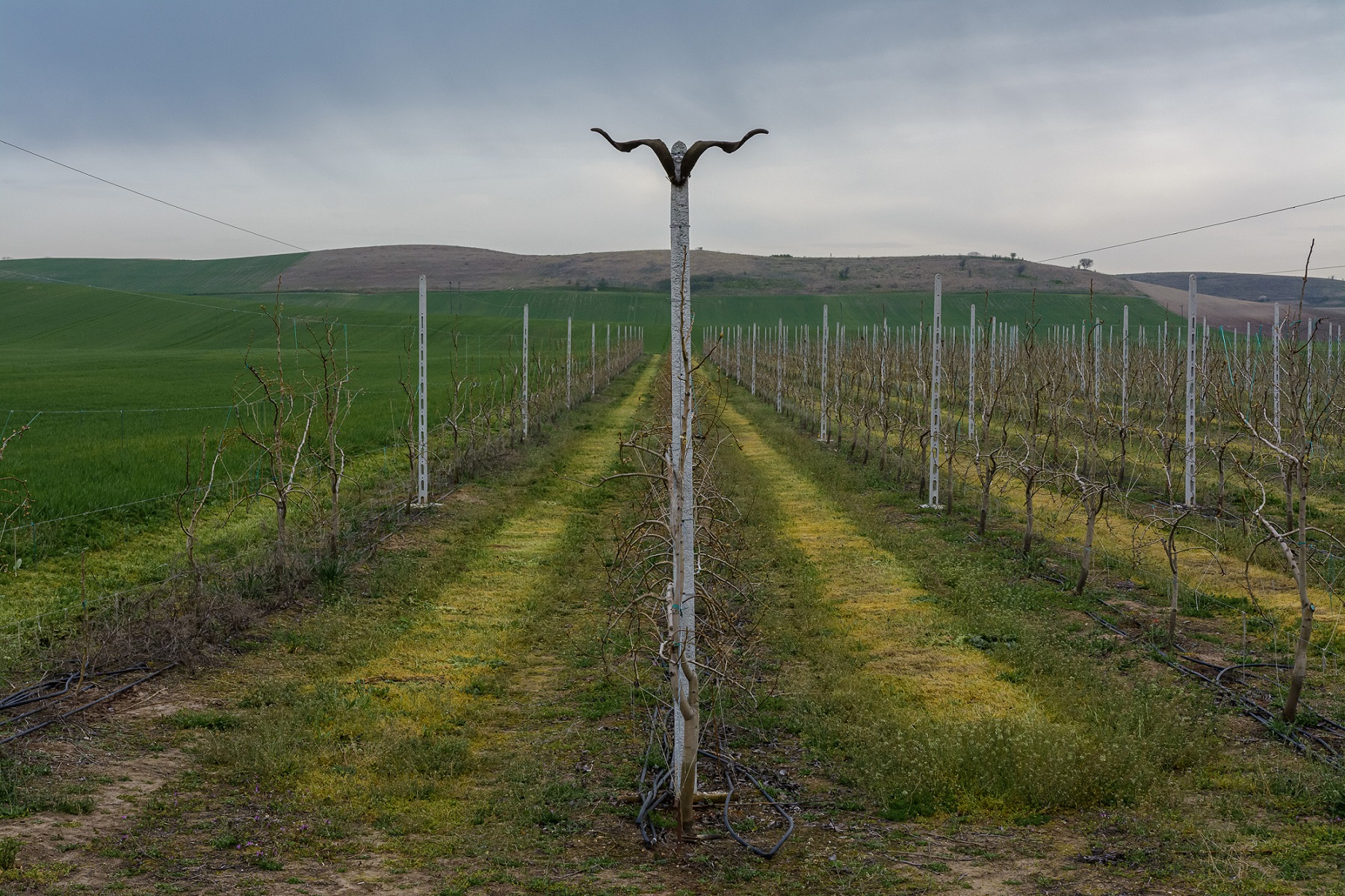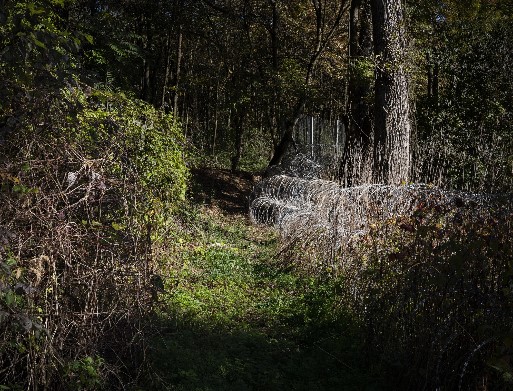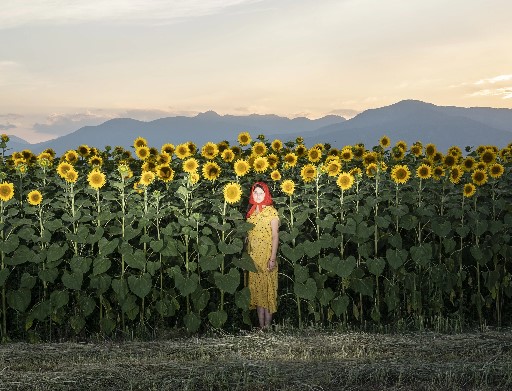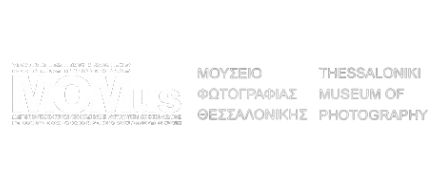There are arguably few landscapes that lend themselves so aptly to the study of the relationship between human civilization and nature like the flatland, where the use of increasingly intensive agricultural methods has profoundly changed human civilization. Vassilis Nempegleriotis’ Stories from the Plain (2017-2022) is a collection of photographs focusing on the Thessalian plain, Greece’s second largest granary. The plain has been a source of both prosperity and inequality, a contrast subtly revealed in the photograph from the monument of Kileler. Born in a farming family, Nempegleriotis examines here the current state of the Thessalian Plain: the uninterrupted vastness of the flat landscape, its relative scarcity of people after mechanized agriculture replaced the swarms of farmers who used to cultivate it, the transformation of the fields into hives of solar energy production, the migrants who have emerged as Greece’s new agricultural workforce, the traces of people who impose their own linear rhythm on nature’s periodical cycle. Nempegleriotis’ photographs tap into the expanse of the land and the absence of pronounced natural features, in order to subtly depict the disturbance of the land, and reveal elements from its modern and social history. At the same time, they offer a careful narrative of the history of the plain as a site of lived experience, where small individual narratives are interwoven with the central, formal one, and the ostensibly motionless land remains a fixed reference point for the lives of ordinary people, in a world that keeps on -perhaps unjustifiably- accelerating, swirling through the climate crisis.

